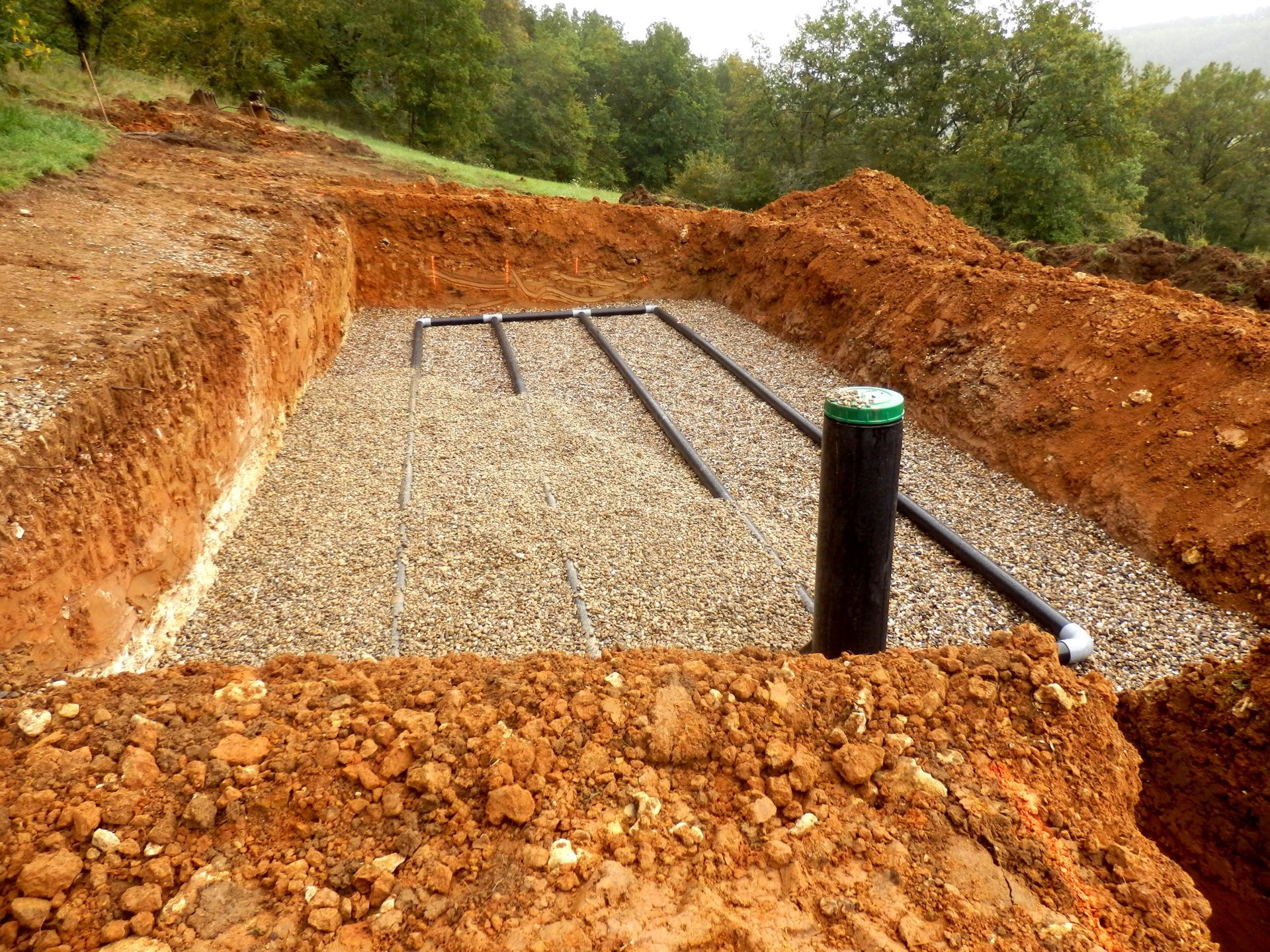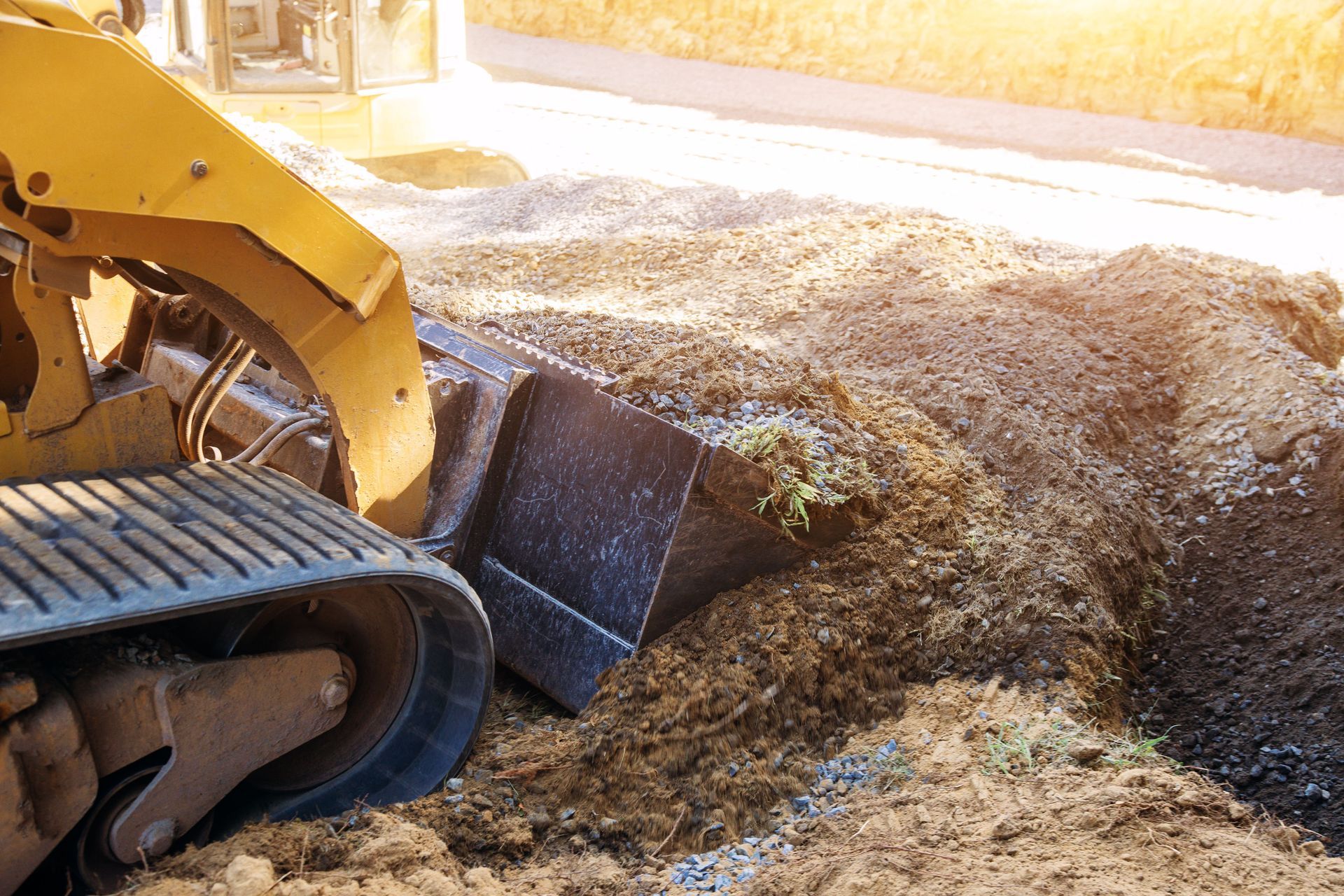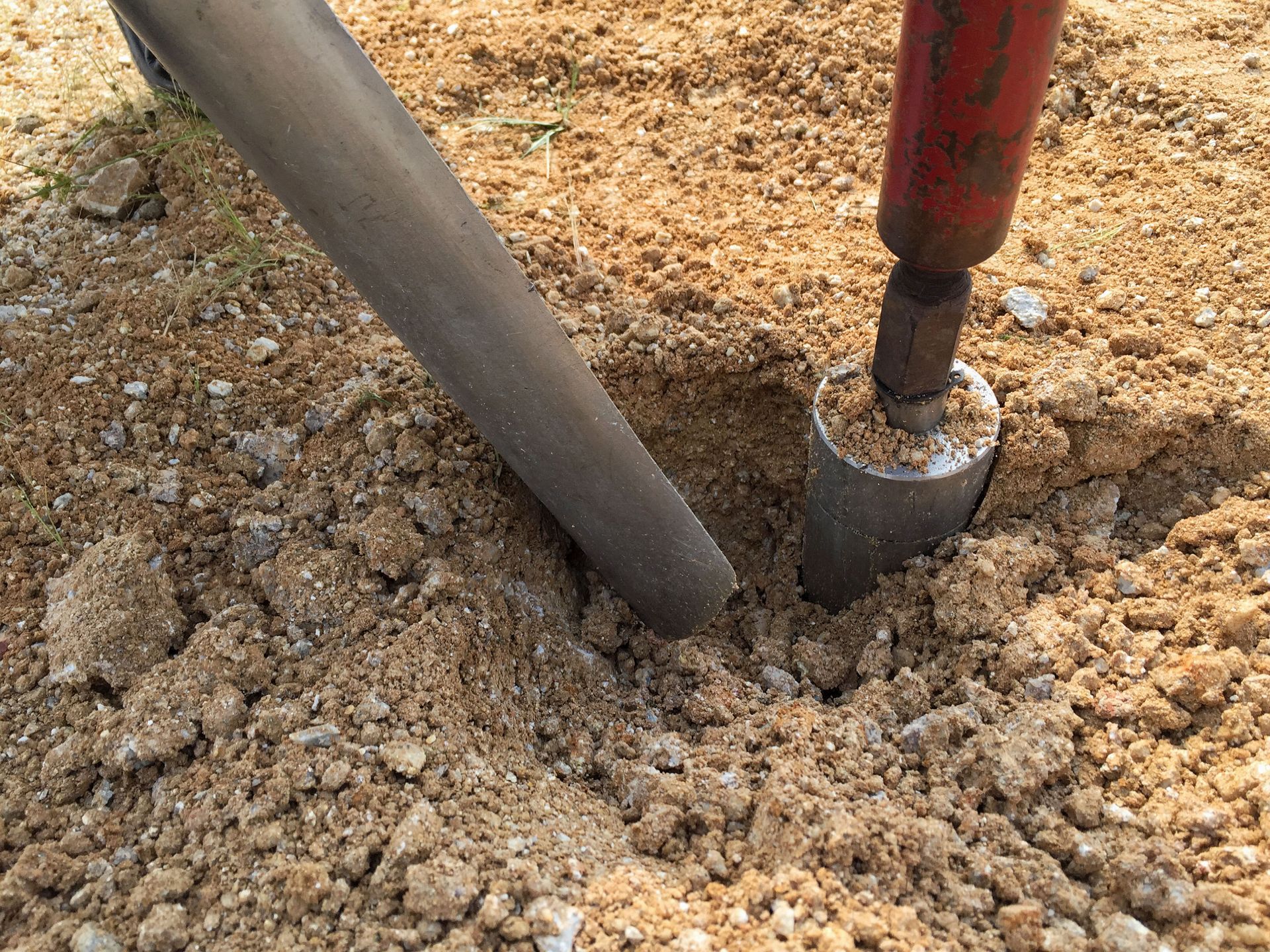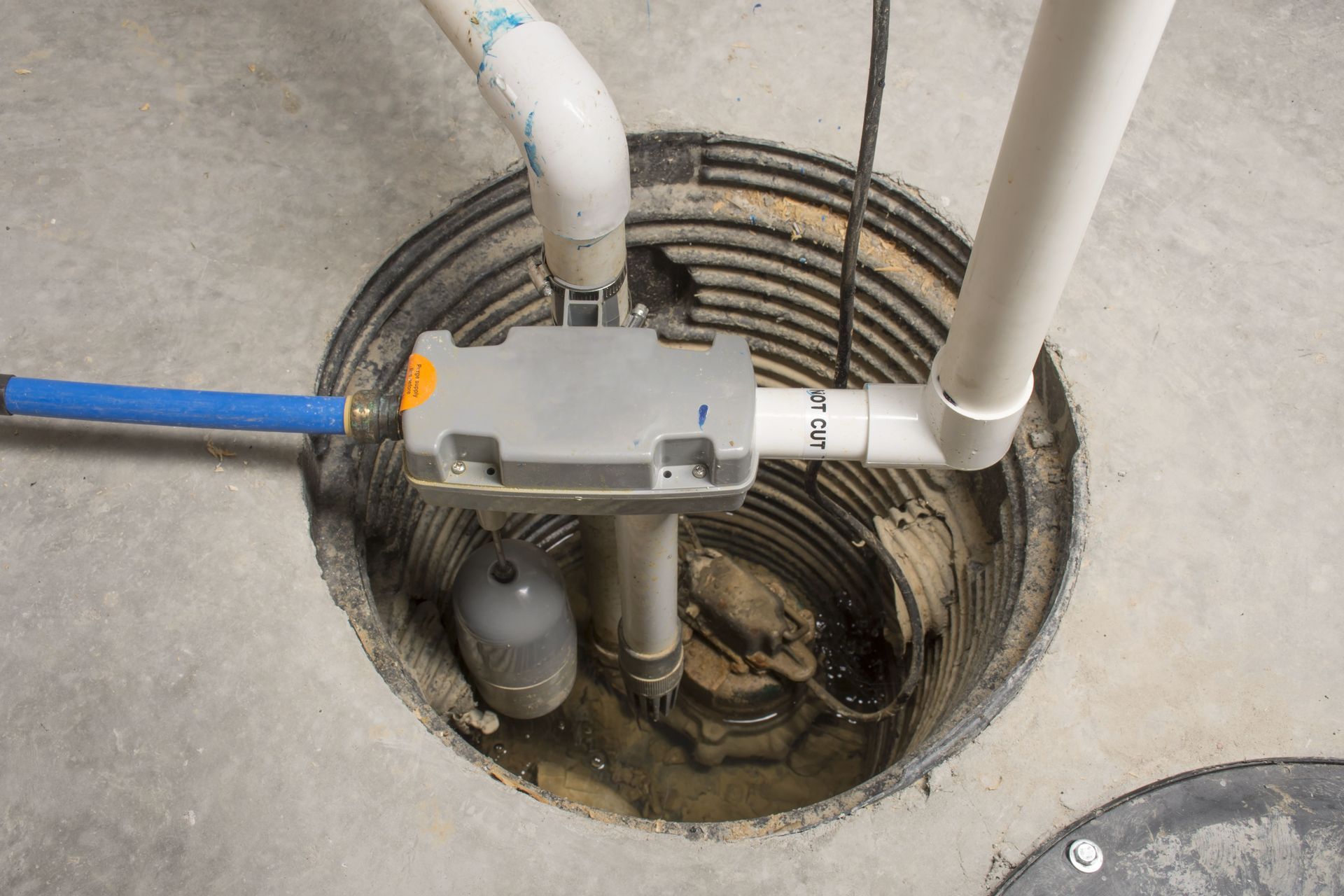A Complete Guide to Septic Installation for New Home Construction
By Stephen Kempenar | August 8, 2025
Understanding key infrastructure choices becomes essential as more families move into newly constructed homes. One of the most critical systems in residential development is the septic system, especially in areas without municipal sewer connections. Septic installation involves careful planning, proper execution, and long-term maintenance. Let's check out everything you need to know to ensure your new home's septic system is efficient, compliant, and sustainable.
According to data from Realtor.com, the pace of new home construction is set to accelerate in 2025, with single-family housing anticipated to climb by 13.8%, ultimately totaling approximately 1.1 million units. With this surge, the demand for professional septic installation will rise alongside it, making it even more important for homeowners to familiarize themselves with the process.
Understanding What a Septic System Does
At its core, a septic system includes a septic tank, a distribution box, and a drain field. The tank collects wastewater and separates solids, while the distribution box evenly channels liquid to the drain field. There, natural filtration through soil treats the water before it returns to the groundwater.
Depending on your land’s characteristics, you might need a conventional gravity system, a mound system, or an aerobic treatment unit. Each has distinct requirements and costs. The best system is determined by local regulations, soil type, and lot size.
Wastewater from your home enters the tank, where solids settle and bacteria help break down organic matter. Liquid effluent is pushed to the drain field, where natural soil processes complete the treatment. This setup ensures a safe, eco-friendly disposal method when designed and maintained properly.
Assessing and Planning the Installation Site
A site evaluation is essential before any digging begins. This process checks slope, drainage, and groundwater levels. Professionals will conduct percolation tests to determine whether the soil can absorb and filter wastewater effectively.
Soil plays a massive role in septic performance. Sandy soil drains quickly but may not filter as well, while clay holds water and can cause backups. Ideally, loamy soil, which offers both drainage and filtration, is most suitable for septic systems.
Every jurisdiction sets standards for septic installation, including required distances from water sources and dwellings. A professional contractor will submit plans and secure permits, making sure your system meets all legal and environmental requirements.
System design is more than just digging holes — it’s a strategic process. The system’s layout must avoid underground utilities and maintain safe distances from structures and water sources. Engineers design it to allow efficient wastewater flow and future access for maintenance.
Choosing the Best Septic System for Your Property
No two septic systems are alike. Choosing the right one depends on your household’s needs, land layout, and local codes. A professional can help you manage options such as gravity, pressure, or aerobic systems to determine the best fit.
Upfront costs vary significantly between traditional and advanced systems. A conventional system may be cheaper to install but more expensive to maintain. Savvy homeowners consider both installation expenses and future maintenance in their budgeting.
Sizing a septic system is about more than just square footage. It’s also based on expected water usage,
usually calculated by the number of bedrooms. An undersized system risks overflows, while an oversized one wastes money. Planning for future household growth is also wise.
Modern septic technologies improve efficiency and monitoring. Aerobic systems treat wastewater faster and more thoroughly, while smart sensors can monitor tank levels and system performance remotely. These innovations are great for homes in areas with stricter environmental requirements.
Executing the Septic Installation Process
Before installation begins, the contractor clears the site and marks utility lines. Permits must be finalized, and materials ordered. Having everything in place beforehand ensures a smoother process from excavation to completion.
Heavy equipment digs the hole for the septic tank, which must be precisely positioned to maintain gravity flow. The tank is then leveled and secured. This step is foundational. Any misalignment could disrupt the system’s efficiency.
The drain field is constructed with perforated pipes laid over gravel beds. It’s essential to avoid compacting the soil, which would inhibit drainage. Once installed, the system is covered with soil and marked for future access.
The house’s plumbing system pipes are connected to the septic tank inlet. Proper slope and airtight seals prevent leaks and backups. A well-installed connection ensures smooth waste transfer from indoors to the tank.
After installation, professionals test the system to ensure all components function properly and meet local standards. Inspectors verify that the tank, distribution box, and drain field work cohesively. Documentation is often submitted to local authorities for compliance records.
Maintaining and Troubleshooting the System
Septic systems require periodic maintenance to stay functional. In our experience, tanks typically must be pumped every three to five years. Regular inspections and cleaning of filters and baffles help prevent issues before they escalate.
Slow drains, unpleasant odors, and soggy patches near the drain field are red flags. These signs may indicate a clogged pipe, a full tank, or a drain field failure. Catching them early can save thousands in repairs.
While minor issues like a slow-draining sink can be fixed at home, persistent problems require professional help. Certified septic contractors can diagnose the issue, make repairs, and offer guidance for ongoing care.
Avoid flushing non-biodegradable items and avoid pouring grease or harsh chemicals down the drain. These materials can harm beneficial bacteria and clog the system. Using water-efficient fixtures also helps reduce stress on the system.
Innovative septic technology now allows remote monitoring of tank levels and alarms for leaks or overflows. These tools can notify homeowners or contractors in real time, allowing for faster, more informed decisions and reducing emergency costs.
Managing Legal and Environmental Concerns
Each area has specific rules for septic installation, from design specs to required inspections. These regulations exist to protect health and water quality. Working with licensed professionals ensures you stay on the right side of the law.
A properly designed and maintained system protects water sources and minimizes pollution. Neglected systems, however, can leak waste into the environment, causing ecological damage. Sustainability begins with responsible system planning and care.
As a homeowner, you are legally responsible for your septic system. That includes maintenance, repairs, and making sure it doesn’t pose a threat to neighbors or the community. Ignoring your obligations can result in fines or lawsuits.
Septic systems prevent wastewater contaminants from entering drinking water or local waterways. Proper treatment ensures bacteria, nitrates, and pollutants are neutralized before re-entering the environment.
As environmental awareness grows, regulations and best practices for septic systems may evolve. With more new homes expected in 2025 and beyond, future laws may prioritize sustainable materials, water recycling, or new treatment methods. Staying informed ensures you remain compliant and ahead of the curve.
Septic installation is a foundational part of building a home, especially in rural or off-grid settings. From choosing the right system to ensuring its long-term functionality, the process demands attention to detail and ongoing care. For homeowners building in 2025, the growing trend in new home construction means septic systems will become more widespread and increasingly regulated.
By understanding each stage of septic installation, you’ll be better equipped to make informed decisions and protect your property investment. Whether you're building your first home or overseeing multiple projects, partnering with an experienced contractor like BTSK Excavating LLC can ensure the process is seamless and the outcome reliable for years to come. Get in touch with BTSK Excavating LLC today to request a consultation and take the first step toward a dependable, professionally installed septic system.





Share On: